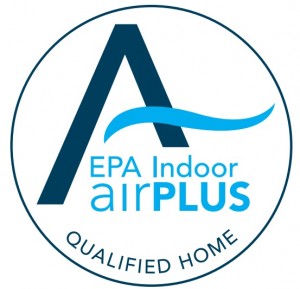 While radon resistant construction measures and mitigation systems are certainly the most effective when it comes to keeping the deadly gas out of your home, Indoor airPlus Construction Specifications can also keep the air quality in your home at healthy levels.
While radon resistant construction measures and mitigation systems are certainly the most effective when it comes to keeping the deadly gas out of your home, Indoor airPlus Construction Specifications can also keep the air quality in your home at healthy levels.
According to the US EPA:
“Indoor airPLUS labeled homes are designed and built to help protect your family from indoor air pollution. The program also provides builders of ENERGY STAR Certified Homes with a new opportunity to differentiate themselves from the competition.”
These standards were adopted because indoor air pollution is becoming more and more of a problem over time. In fact, the EPA estimates that the average air inside a home is 2 to 5 times more polluted than outdoor air.
Indoor airPlus Homes Must Meet a Series of Strict Requirements
All homes must be verified to meet the necessary requirements before they are labeled as Indoor airPlus certified. The US EPA has provided builders and contractors with a very thorough checklist and set of instructions for implementing Indoor airPlus construction in a home.
As a general guideline, Indoor airPlus homes were designed with these seven techniques in mind.
- Moisture Control – All areas of the home, including the foundation must be sealed and constructed using moisture resistant measures. This prevents moisture, severe humidity and several problems assocaited with those elements from contaminating the air inside the home.
- Radon Resistant Construction – The common radon resistent construction measures must be implemented. Obviously, this will prevent radon from collecting and building up inside the home at dangerous levels.
- Pest Barrier Construction – Potential pathways for pests should be sealed enough to prevent entry into the home. This includes preventative measures for rodents, insects – including termites – and birds.
- Proper HVAC System Measures – The various inner workings, ducts and ventilation areas must utilize the proper HVAC measures to prevent air contamination inside the home. This includes measures to prevent indoor humidity, moisture, and exhaust areas for known pollutants.
- Combustion Pollutant Control – This essentially requires the implementation of measures and techniques to prevent common pollutants such as auto emissions, tobacco smoke, carbon monoxide and more.
- Low – Emission Construction Materials – This includes a series of instructions about the types of materials that can be used to build the home, all of which do not exhibit VOC traits, or volatile organic compounds. Certain materials – if used – can and will release pollutants over an extended period of time. This technique basically ensures very few to none of those materials are used.
- Home Commissioning – The homeowner or buyer must be educated on the Indoor airPlus certification and the measures used to keep the air quality in the home at healthy levels. They must understand the airPlus requirements checklist and any systems in place to keep the home clean.
Is Your Home Indoor airPlus Certified?
As you can see, before a home can be given the Indoor airPlus label it must include everything from the extensive checklist. After purchasing a verified home, you’ll be given a manual that describes all the preventative measures taken – and instructions to operate the various systems in place.


